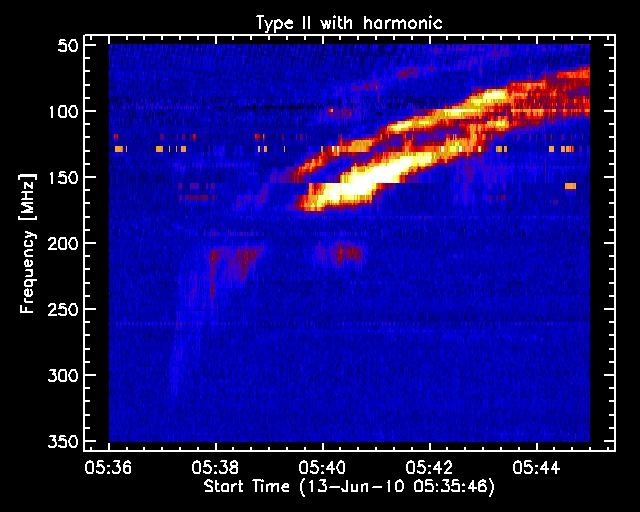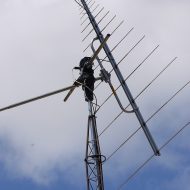
When eruptive episodes of solar activity occur, such as coronal mass ejections (CMEs) or fulgurations, these are accompanied by transient increases in radio wave emission known as radio-bursts or sporadic radio-emissions. The study of their properties allows to know better the functioning of these processes in the Sun and their consequences for human activities. For so, the flux density of radio emissions is measured. The standard measurement is known as sfu (from solar flux units), which is equivalent to 10-22 W/m2/Hz. The SFI in the figure above is the sfu flux for a wavelength of approximately 10.7 cm (or frequency of 2.8 GHz), as ultraviolet emission from the Sun is closely related to radio emissions at that wavelength. Ultraviolet radiation is responsible for the formation of the ionosphere and in turn depends on the number of sunspots (SN). The higher the number of spots, the higher the SFI. The recorded minimum is 67 sfu when the Sun is calm, but can reach values of more than 400 sfu at times of maximum activity. If you want to know more about solar parameters and their relationship to space weather, click here.

e-CALLISTO (International Network of Solar Radio Spectrometers, a Space Weather Instrument Array) is a chain of low cost solar observation stations around the world on radio waves to follow the Sun 24 hours a day . It is part of the UN ISWI (International Space Weather Initiative) international cooperation programme aimed at developing the scientific knowledge needed to understand and predict space meteorology near planet Earth. This development includes instrumentation, data analysis, modeling, education, expert training and outreach. Despite its low cost, Callisto is especially useful for studying large explosions in the Sun’s atmosphere known as solar eruptions. The radio emissions of these events are important to understand the dynamics of the solar corona. Solar flares are also often associated with coronal mass ejections, huge flows of sun-laden particles that are a danger to orbiting satellites, electrical distribution networks and can disrupt television or mobile signals. As radio signals travel faster than particles, e-CALLISTO also functions as an early warning system, alerting space mission control centers to disturbances caused by upcoming coronal mass ejections from the sun.

This philosophy of inclusive science was immediately successful after its presentation in the 2007 International Heliophysical Year. Today, the network has more than 150 detectors in more than 90 locations on five continents. This deployment is part of the Instrument Deployment Program of the UNBSSI (United Nations Basic Space Science Initiative) and ISWI (International Space Weather Initiative) initiatives. The network is closely related to different national and continental radio astronomy organizations, such as CESRA (Community of European Solar Radio Astronomer), which is an organization of European scientists to stimulate research in the outer solar atmosphere by means of radio waves.
